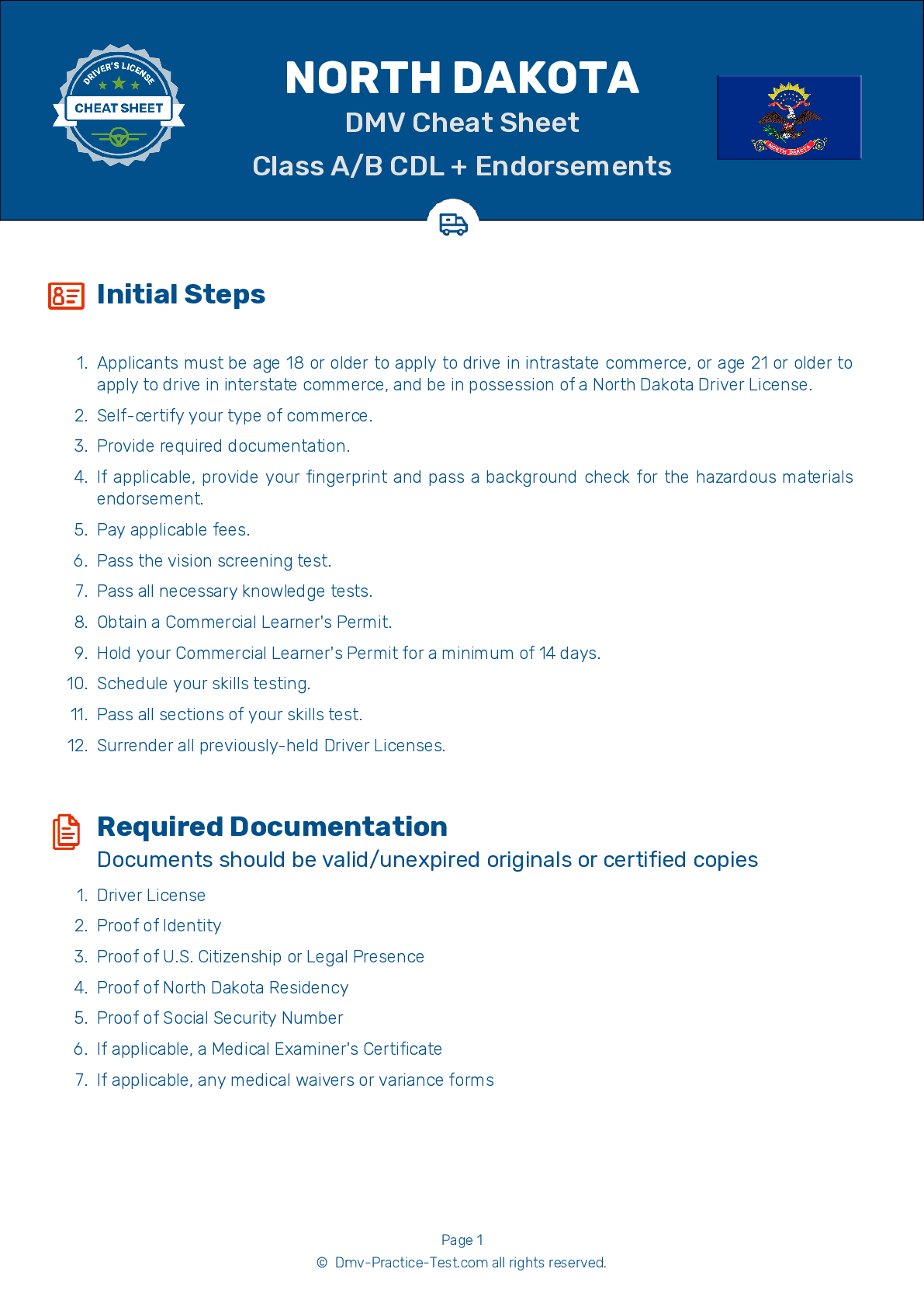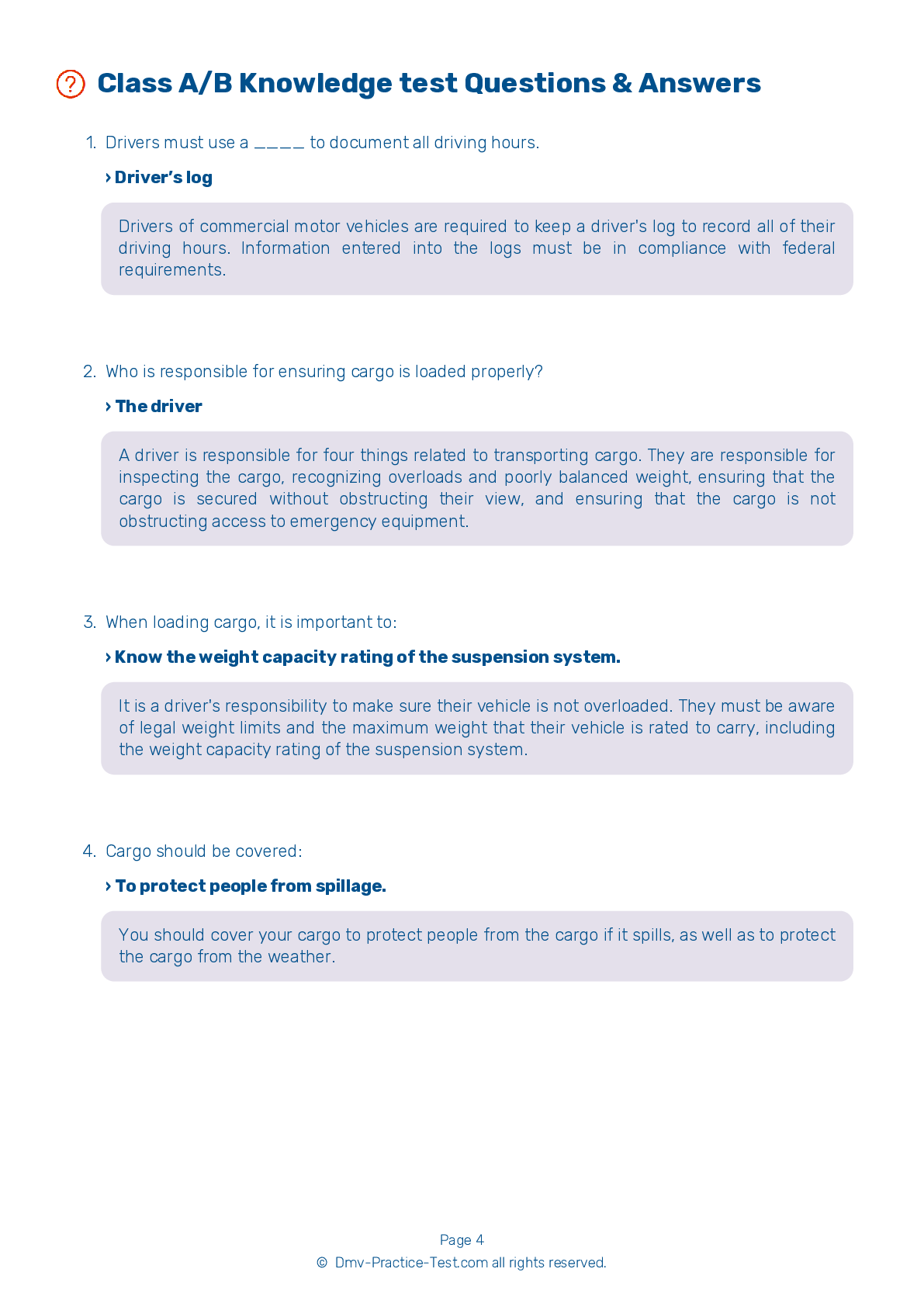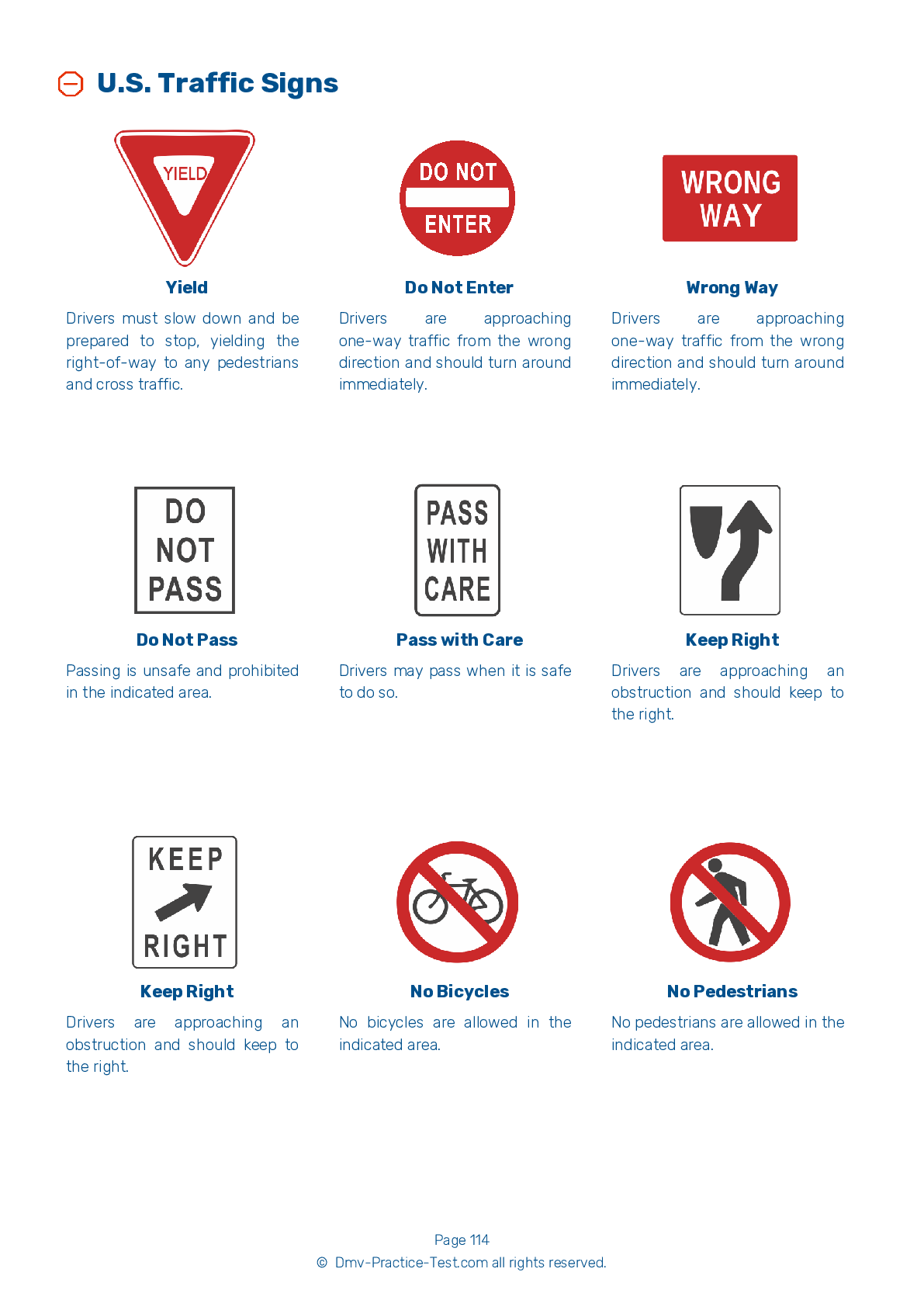Bus #2
Bus Driver Testing | North Dakota 2025 #2
Train for FREE online with our ND bus CDL test. The official exam test consists of several obligatory parts, with all of them checking your knowledge of different blocks of road rules. If you need to obtain a license in North Dakota in 2025, learn how to become a bus driver and then practice as much as possible. Free sample tests published on our website will help you check and improve your knowledge and boost your grades. Please bear in mind that DMV requirements for a bus driver may vary from state to state.
20
16
20
1 . When should you check and adjust your mirrors?
Mirrors do not need to be adjusted.
The adjustment of mirrors must be checked prior to the start of any trip.
2 . Buses must never carry:
Emergency hospital supplies.
Buses may never be used to transport radioactive materials. Division 2.3 poison gas, liquid Class 6 poisons, tear gas, and irritating materials are also not permitted to be carried by bus.
3 . Pressing and releasing the brake pedal unnecessarily can:
Create a loud noise.
On a vehicle with air brakes, pressing and releasing the brake pedal unnecessarily may let air out of the braking system faster than the compressor can replace it. This may cause the system's air pressure to become too low and the brakes to stop working.
4 . Before driving a vehicle with air brakes, you should ensure that the spring brakes come on automatically when:
Driving uphill.
Before driving a vehicle with air brakes, you should ensure that the spring brakes come on automatically when air tank pressure falls to a level between 20 and 45 psi. You can do this by chocking the wheels and releasing air from the braking system by stepping on and off the brake pedal. Once the pressure drops to an unsafe level, the parking brake valve should pop out and spring brakes should come on.
5 . ABS helps you:
Predict the weather.
An Ant-Lock Braking System (ABS) helps stop a vehicle's wheels from locking up during hard brake applications.
6 . During the pre-trip inspection test, you will be:
Changing all the tires on your vehicle.
During the vehicle inspection test, you will be asked to do a complete inspection of your vehicle. You will need to explain what you are inspecting and why.
7 . Air tank drains:
Clean the air in the passenger compartment.
In an air brake system, air tanks have drains to remove accumulations of water and compressor oil. Allowing water and oil to accumulate in the system could cause damage to the brakes. Manually operated drains should be used daily.
2025 North Dakota | Frequently Asked Questions
To acquire a CDL Passenger endorsement in North Dakota, you must first have a valid CDL. Then, you'll need to pass the Passenger Transport Test, which covers the special skills and knowledge needed for safely transporting passengers. You may also need to pass a road test in a vehicle similar to the one you'll be driving.
To obtain a CDL Passenger license in North Dakota, you must be at least 21 years old, hold a valid CDL, pass a Passenger Transport written test, and successfully complete a road skill test in the type of vehicle you plan to drive. Additionally, you'll need to pass a physical exam and meet vision requirements.
While North Dakota does not explicitly require specific training to secure a CDL Passenger endorsement, it's highly recommended. Training can help you prepare for the Passenger Transport Test and a road skills test. Experience is not required, but understanding and skills gained from driving similar vehicles can be beneficial.
Yes, to obtain a CDL Passenger endorsement in North Dakota, you must pass a Passenger Transport written test. This test covers topics like vehicle inspection, loading and trip start, on the road and after-trip vehicle inspection. It's designed to ensure you have the knowledge to safely transport passengers.
During the CDL Passenger endorsement assessment in North Dakota, you'll need to demonstrate skills like safe driving practices, proper use of mirrors, executing turns and stops, and emergency procedures. You'll also need to show understanding of passenger safety rules, including proper loading/unloading procedures and use of emergency exits.
No, you cannot legally transport passengers in North Dakota without a valid CDL Passenger endorsement. This endorsement is required for drivers who wish to drive vehicles such as buses or vans that can transport 16 or more passengers, including the driver. Driving without the necessary endorsement could result in serious penalties.
Yes, you can add the CDL Passenger endorsement to your existing commercial driver's license in North Dakota. You don't need to apply for a new license, but you will need to pass the Passenger endorsement knowledge test and a skills test in the type of vehicle you wish to drive.
Yes, there are specific restrictions for drivers with a CDL Passenger endorsement in North Dakota. Drivers must not have a record of serious traffic violations, cannot operate a vehicle unless all passengers have their seat belts fastened, and cannot tow a trailer with a passenger vehicle. Additionally, they must comply with hours of service regulations to prevent driver fatigue.
In North Dakota, to be eligible for a CDL Passenger endorsement, you must be at least 21 years old. This is because federal regulations require drivers who transport passengers across state lines or who drive vehicles carrying hazardous materials to be at least 21. There are no upper age limits as long as the driver can pass the necessary medical examinations.
With a CDL Passenger endorsement in North Dakota, you are eligible to operate vehicles such as buses, shuttle vans, or any vehicle designed to transport 16 or more passengers, including the driver. This endorsement also allows you to drive vehicles used for transporting disabled or elderly individuals. However, additional endorsements may be required for certain vehicles, like school buses.



